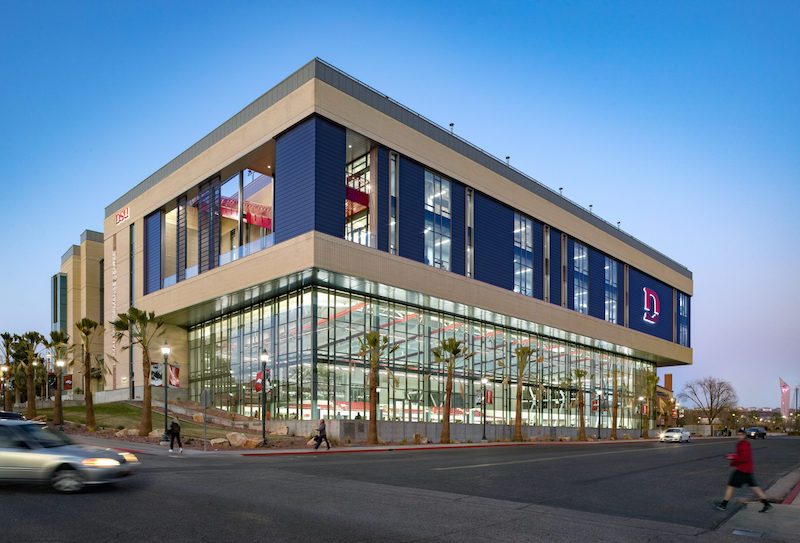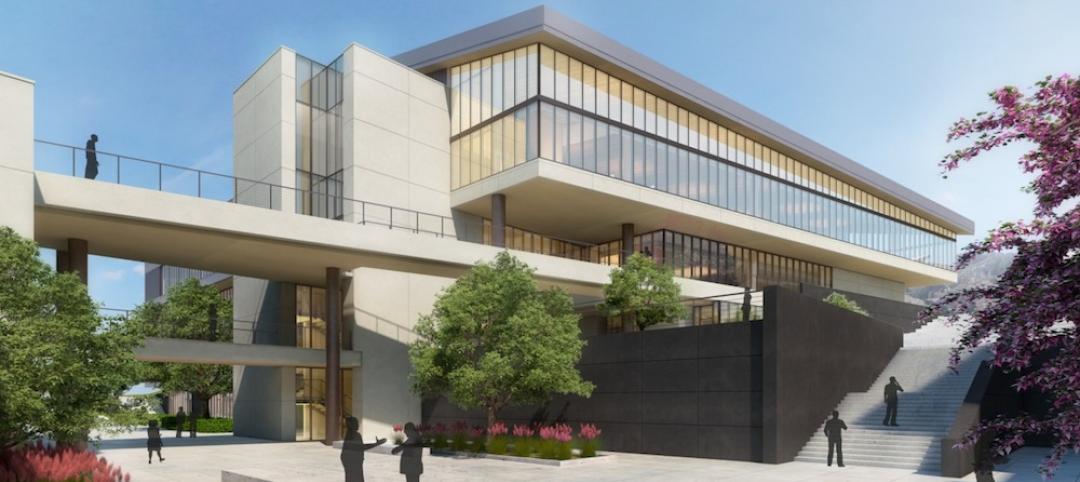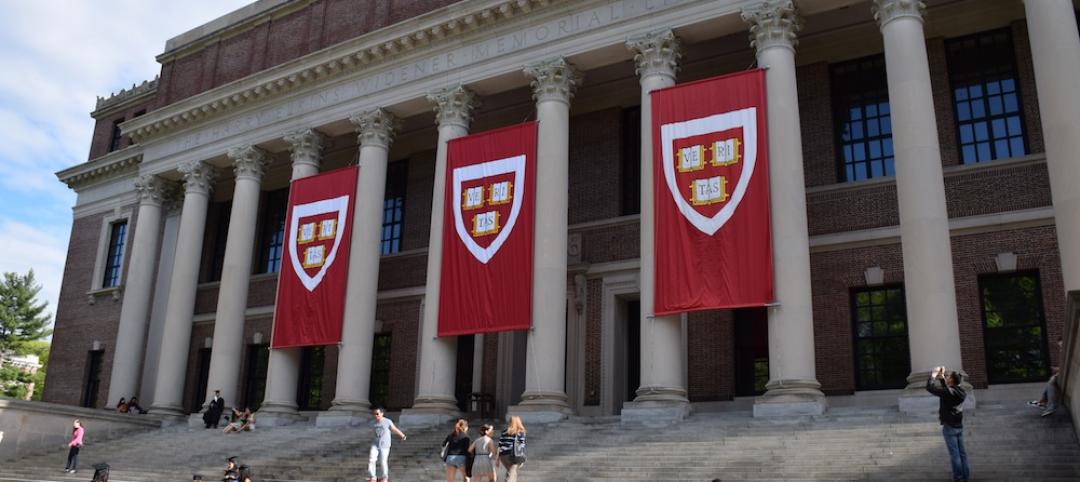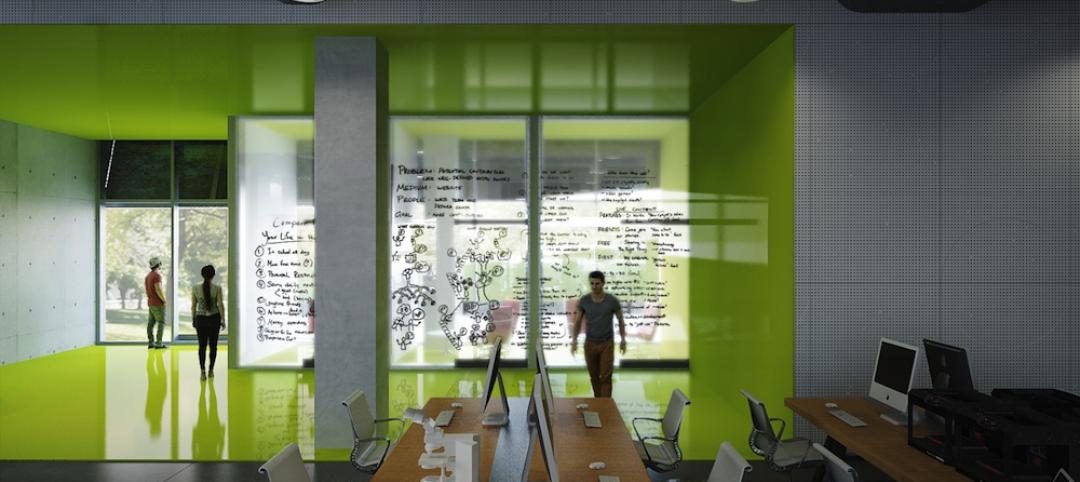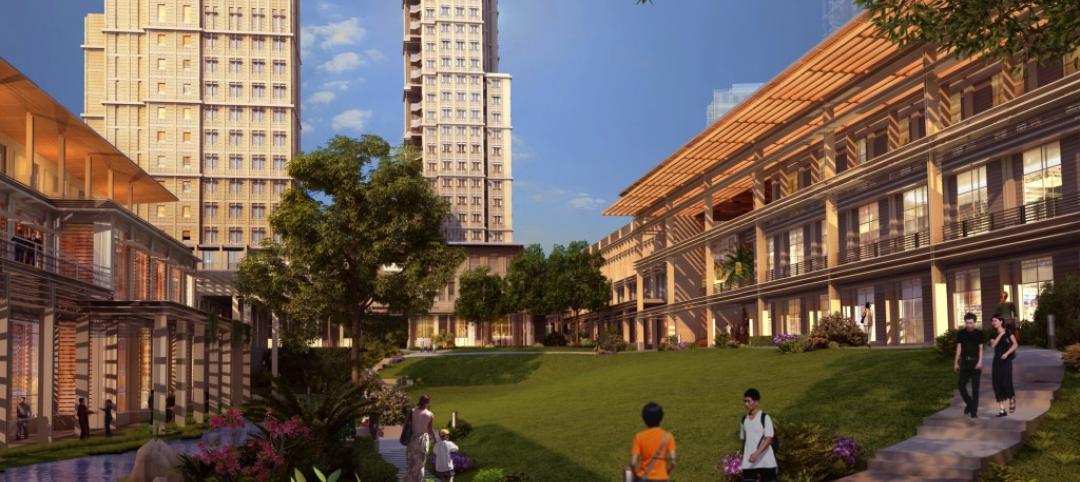Hastings +Chivetta, in association with MHTN Architects, has designed Dixie State University's new 155,000-sf Human Performance Center on their St. George, Utah campus.
And while it may sound like the name of the building where Ivan Drago trained for his fight against Rocky Balboa, the Human Performance Center is actually the new home for the school's academic programs in Health and Human Performance such as exercise science, sports management, and health administration. The facility also provides space for Dixie State's joint effort with the University of Utah to offer physical and occupational therapy degrees.
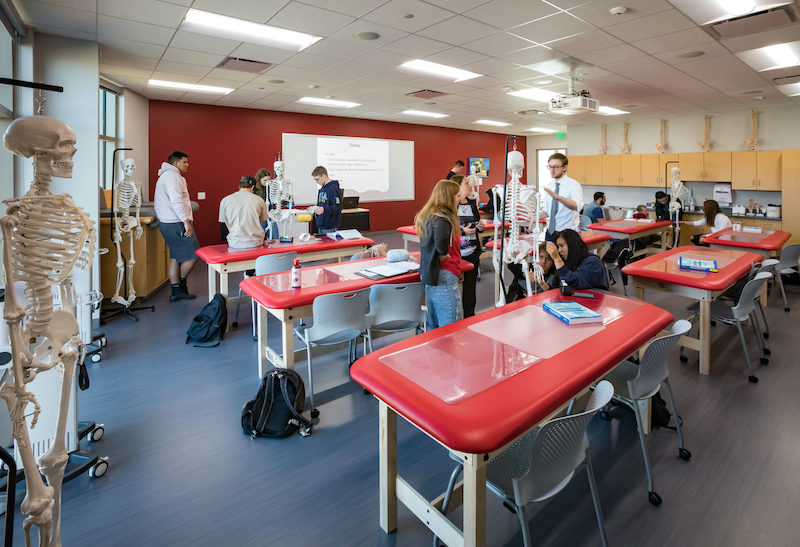
In addition to the new building's academic aspects, it will also serve the campus's recreation, intramural, and athletic needs. The Human Performance Center features a fitness center with cardio, weights, and functional training; a track; a two-court gymnasium; multi-activity courts; a climbing wall; and a rooftop recreation area.
Amenities include pickleball courts, basketball courts, an indoor outdoor track that will circle the roof and continue indoors via a sprint track, and a 50-meter swimming pool. The pool is the only one in Southern Utah that conforms to NCAA Division II standards and will be open to the public during non-academic hours.
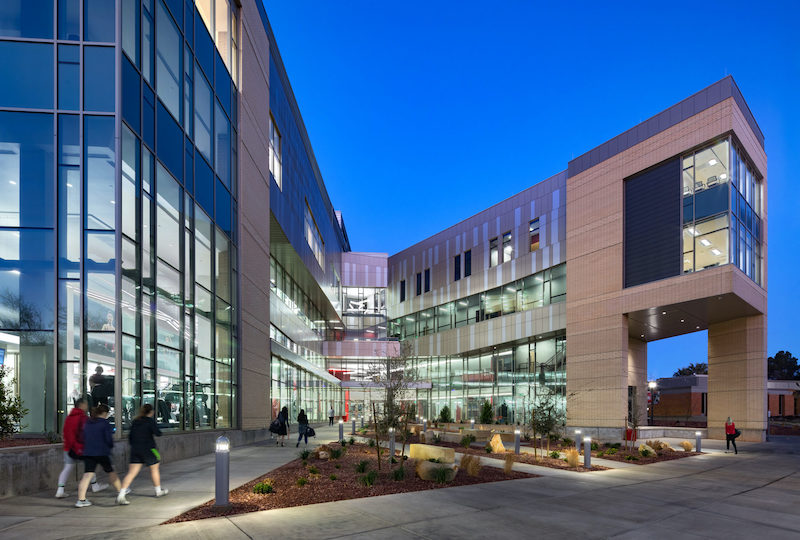
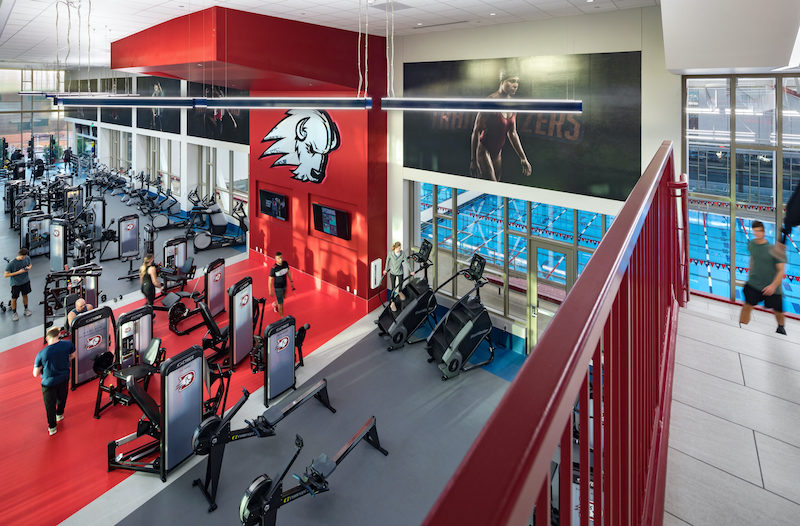

Related Stories
University Buildings | Mar 11, 2016
How architects can help community colleges promote community on campus
Even in the face of funding challenges and historic precedent, there are emerging examples of how partnership between two-year academic institutions and designers can further elevate community on campus. CannonDesign's Carisima Koenig has a few key examples.
University Buildings | Mar 1, 2016
The 5 most questionable college and university rankings of 2015
SmithGroupJJR's David Lantz identifies five of the most flawed higher education rating systems, including ones with arbitrary categories, and others that equate college with a transactional investment.
University Buildings | Feb 29, 2016
4 factors driving the student housing market
In the hyper-competitive higher education sector, colleges and universities view residence halls as extensions of their academic brands, both on and off campus.
University Buildings | Feb 17, 2016
New ideas to help universities attract and empower STEM students
Educational institutions are focusing on new learning strategies that engage students in activities, enable collaboration across STEM disciplines, and encourage students to use their hands just as much as their heads, as Stephen Blair of CannonDesign writes.
Multifamily Housing | Feb 1, 2016
Top 10 kitchen design trends for 2016
Charging stations, built-in coffeemakers, and pet stations—these are among the top kitchen design trends for the coming year, according to a new survey of kitchen and bath designers by the National Kitchen & Bath Association.
| Jan 14, 2016
How to succeed with EIFS: exterior insulation and finish systems
This AIA CES Discovery course discusses the six elements of an EIFS wall assembly; common EIFS failures and how to prevent them; and EIFS and sustainability.
Greenbuild Report | Dec 10, 2015
AASHE’s STARS tool highlights the university sector’s holistic approach to sustainability
Buzzwords like “living lab” and “experiential learning” are indicative of the trend toward more holistic sustainability programs that incorporate all facets of college life.
University Buildings | Nov 5, 2015
How active design is reshaping higher education campuses
Active design, a dynamic approach to design with a primary focus on people, assists students in learning to make healthy choices, writes LPA's Glenn Carels.
University Buildings | Nov 4, 2015
Yale completes Singapore campus
The Yale-NUS College has three residence halls and two administrative and academic buildings, with courtyards in the middle of them all.
University Buildings | Oct 16, 2015
5 ways architecture defines the university brand
People gravitate to brands for many reasons. Campus architecture and landscape are fundamental influences on the college brand, writes Perkins+Will's David Damon.


